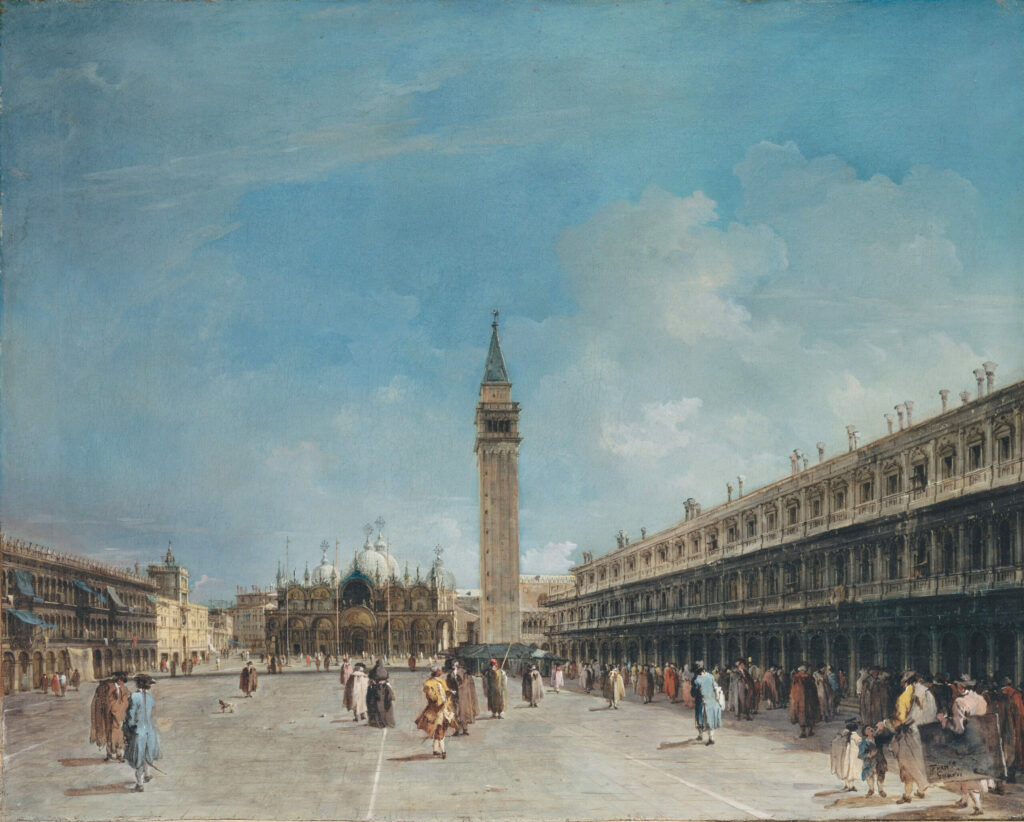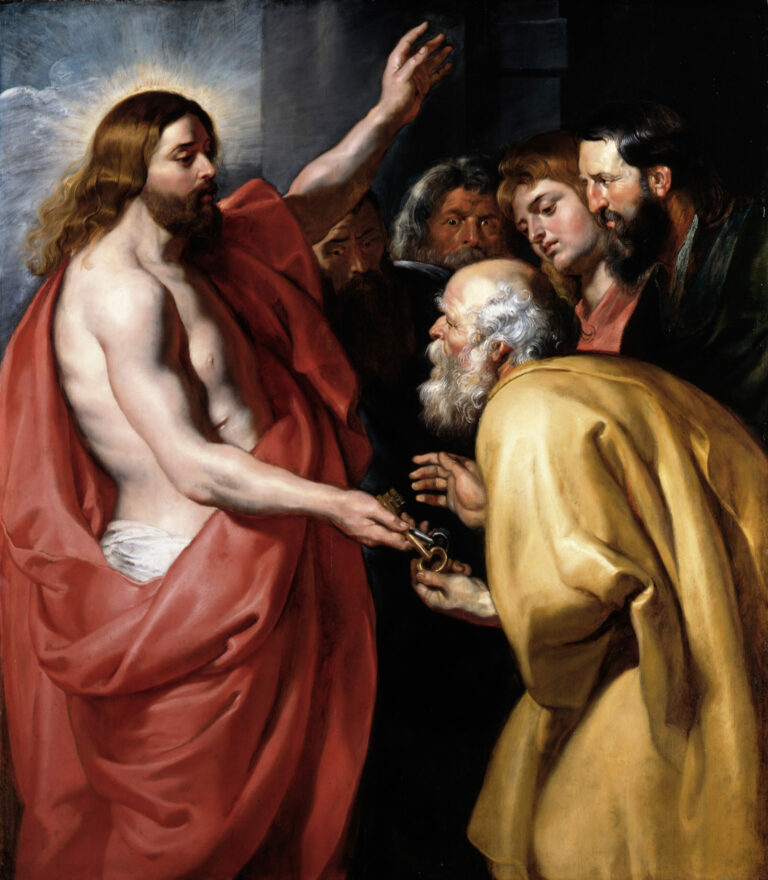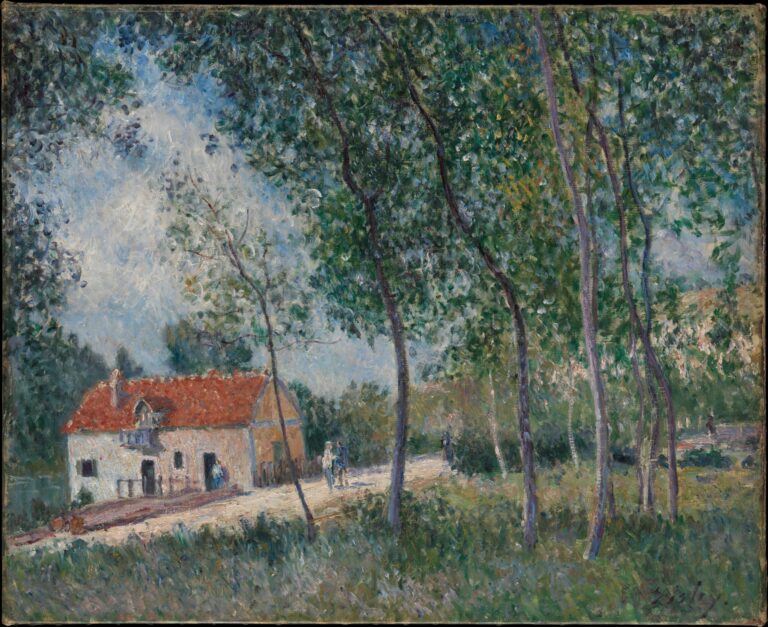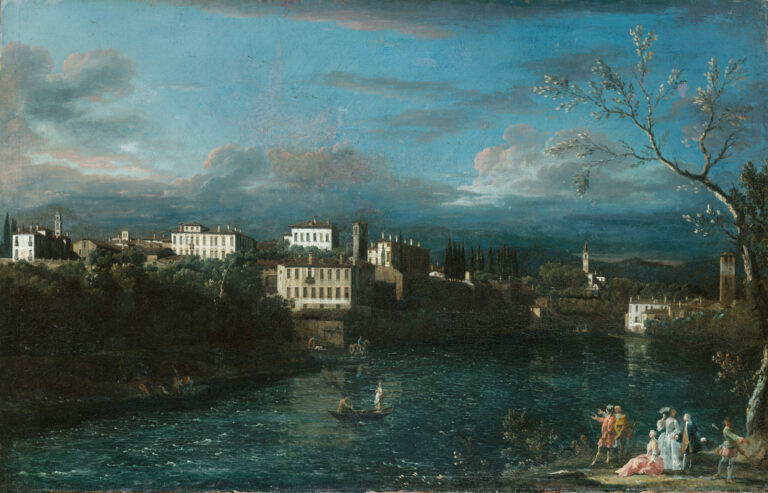
This veduta reveals the evolution of the topographical genre between the generations of Canaletto and Guardi. Painted forty years after his predecessor’s famous view, this work testifies to a radically different approach: where Canaletto favored geometric rigor and architectural precision, Guardi develops a freer and more impressionistic technique.
St. Mark’s Square, with its Byzantine basilica crowned by glittering domes and its soaring campanile, bathes in golden light that unifies the whole. The figures, rendered in quick, colorful brushstrokes, animate the composition without strict geometric constraints. The artist employs a playful and metapictorial device by signing the miniature canvas carried by the man in the lower right. This work perfectly illustrates the transition toward a more sensitive and poetic painting of the urban landscape.
Further information
- Venice, Piazza San Marco by Francesco Guardi, late 1760s
- 68.9 x 85.7 cm (27 1/8 x 33 3/4 in.)
- The Metropolitan Museum of Art, Fifth Avenue, New York, displayed in Gallery 644
- https://www.metmuseum.org/art/collection/search/436597
Venetian painter of the vedutisti family, Francesco Guardi (1712-1793) embodies the evolution of urban landscape painting in the 18th century. Trained in the family workshop alongside his brother Giovanni Antonio, he specialized in views of Venice after 1760, developing a personal style distinct from that of Canaletto. His technique privileges spontaneity over topographical minutiae: free brushwork, subtle atmospheric effects, and plays of light give his works a particular poetry. Less concerned with architectural accuracy than his illustrious predecessor, Guardi transcends simple documentation to create impressionistic visions of the Serenissima. His architectural caprices and Venetian genre scenes reveal the temperament of an artist rather than the eye of a topographer, anticipating the aesthetic concerns of the following century.






